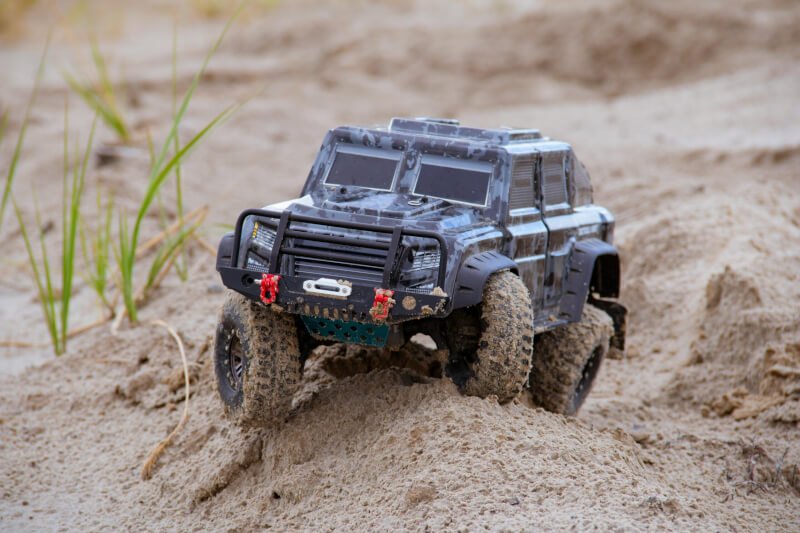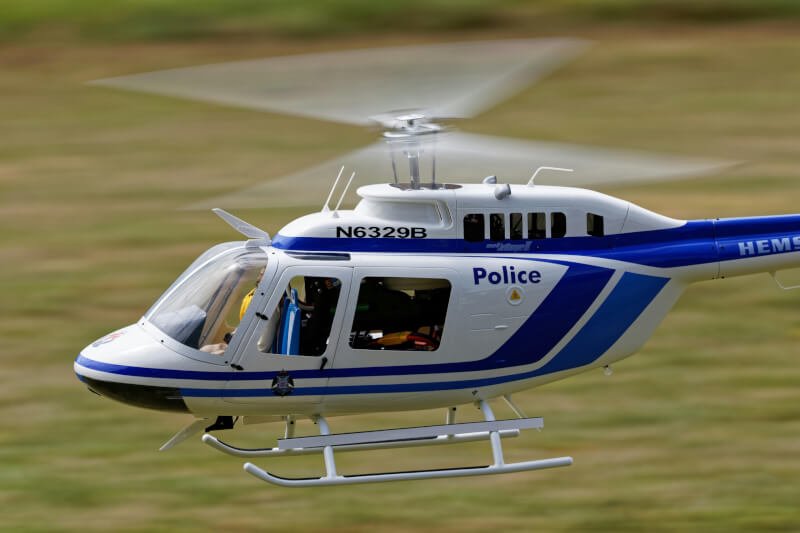Welcome to “The Ultimate Guide To Understanding RC Heli Altitude Hold!” In this article, you’ll learn all about how altitude hold technology works in remote control helicopters, the benefits it offers, and how to effectively use it to improve your flying experience. Get ready to take your RC heli skills to new heights with this comprehensive guide!
“Have you ever wondered how RC helicopters are able to maintain a consistent altitude mid-flight?”
Flying remote-controlled helicopters can be a thrilling experience. But what makes these helicopters hold their position in the air? In this ultimate guide, we will dive into the world of RC heli altitude hold and break down everything you need to know to enhance your flying experience.

What is Altitude Hold in RC Helicopters?
Imagine being able to fly your RC helicopter without constantly having to adjust the throttle to maintain a specific height. Altitude hold is a feature in RC helicopters that allows the aircraft to automatically adjust its throttle to keep a consistent altitude in the air. This feature is especially useful for beginners who are still mastering the art of flying.
Altitude hold works by utilizing a barometric sensor that measures the air pressure to determine the aircraft’s height. With this information, the helicopter’s flight controller adjusts the throttle to ensure that it stays at the desired altitude without any input from the pilot.
How Does Altitude Hold Benefit RC Helicopter Pilots?
For RC helicopter enthusiasts, altitude hold offers several advantages that enhance the flying experience. Firstly, it allows pilots to focus more on maneuvering the helicopter without the constant need to adjust the throttle. This can be particularly useful for capturing smooth and steady aerial footage or for performing complex stunts with precision.
Additionally, altitude hold can help beginners build confidence in their flying skills as they don’t have to worry about maintaining a stable height while learning to control the helicopter. This feature can also be a lifesaver in windy conditions where maintaining altitude manually can be a challenge.
Types of Altitude Hold Systems in RC Helicopters
There are two main types of altitude hold systems in RC helicopters: barometric altitude hold and optical flow altitude hold.
Barometric Altitude Hold
Barometric altitude hold systems rely on a barometric sensor to measure the air pressure and calculate the helicopter’s altitude. This information is then used by the flight controller to adjust the throttle and maintain a consistent height. Barometric altitude hold is effective for outdoor flying where the air pressure remains relatively stable.
Optical Flow Altitude Hold
On the other hand, optical flow altitude hold systems use a camera and optical sensors to determine the aircraft’s height by tracking the ground below. This type of altitude hold is particularly useful for indoor flying where barometric sensors may not work effectively due to the lack of atmospheric pressure changes.
Optical flow altitude hold can also provide more accurate altitude readings in environments with varying lighting conditions, making it a versatile option for RC helicopter pilots.
How to Activate Altitude Hold Mode in RC Helicopters
Activating altitude hold mode in your RC helicopter may vary depending on the model and type of transmitter you are using. Generally, you can activate altitude hold by following these steps:
- Make sure your helicopter is powered on and that the flight controller has been properly calibrated.
- Look for the altitude hold switch or button on your transmitter. This is usually labeled as “Alt Hold” or “Attitude Hold.”
- In some cases, you may need to set the desired altitude before engaging the altitude hold mode. This can be done by adjusting the settings on the flight controller.
- Once you have located the altitude hold control on your transmitter, switch it on or press the button to activate altitude hold mode.
Activating altitude hold mode can vary in complexity depending on the specific model of your RC helicopter. Refer to your user manual for detailed instructions on how to engage altitude hold on your aircraft.

Tips for Flying with Altitude Hold
Now that you have mastered the art of activating altitude hold mode in your RC helicopter, here are some tips to enhance your flying experience:
- Practice Hovering: Altitude hold mode is great for practicing hovering maneuvers as it allows you to focus on controlling the helicopter’s direction without having to worry about maintaining height.
- Experiment with Different Altitudes: Test out flying at different altitudes to see how your helicopter responds. This can help you get a better feel for how altitude hold works in various situations.
- Adjust Sensitivity Settings: Some altitude hold systems allow you to adjust the sensitivity of the throttle response. Experiment with these settings to find the perfect balance for your flying style.
- Stay Calm and Focused: Flying with altitude hold can make your flights smoother, but it’s essential to remain focused on controlling the helicopter. Avoid distractions and stay calm to ensure a safe and enjoyable flying experience.
Common Issues with Altitude Hold Mode
While altitude hold can greatly enhance your flying experience, there are some common issues that pilots may encounter when using this feature. Here are a few challenges to be aware of:
Altitude Drift
Altitude drift occurs when the helicopter slowly loses or gains altitude while in altitude hold mode. This can be caused by fluctuations in air pressure, calibration errors, or interference with other sensors. To address altitude drift, ensure that your helicopter’s sensors are properly calibrated and that you are flying in an area with stable atmospheric conditions.
Altitude Oscillation
Altitude oscillation refers to the helicopter constantly adjusting its altitude up and down in quick succession. This can be caused by overly sensitive throttle settings, incorrect sensor readings, or external factors like wind. Adjusting the throttle sensitivity settings and flying in calmer weather conditions can help reduce altitude oscillation.
Sensor Interference
Sensor interference can disrupt the accuracy of altitude hold mode, leading to erratic flight behavior. To minimize sensor interference, avoid flying in areas with electromagnetic interference, and ensure that your helicopter’s sensors are properly shielded and calibrated.

Conclusion
Altitude hold mode is a valuable feature that can significantly improve your RC helicopter flying experience. By understanding how altitude hold works, knowing how to activate it, and following tips for flying with this feature, you can take your aerial adventures to the next level. Keep honing your skills, experimenting with different altitudes, and addressing common issues to become a master of RC heli altitude hold. Happy flying!


